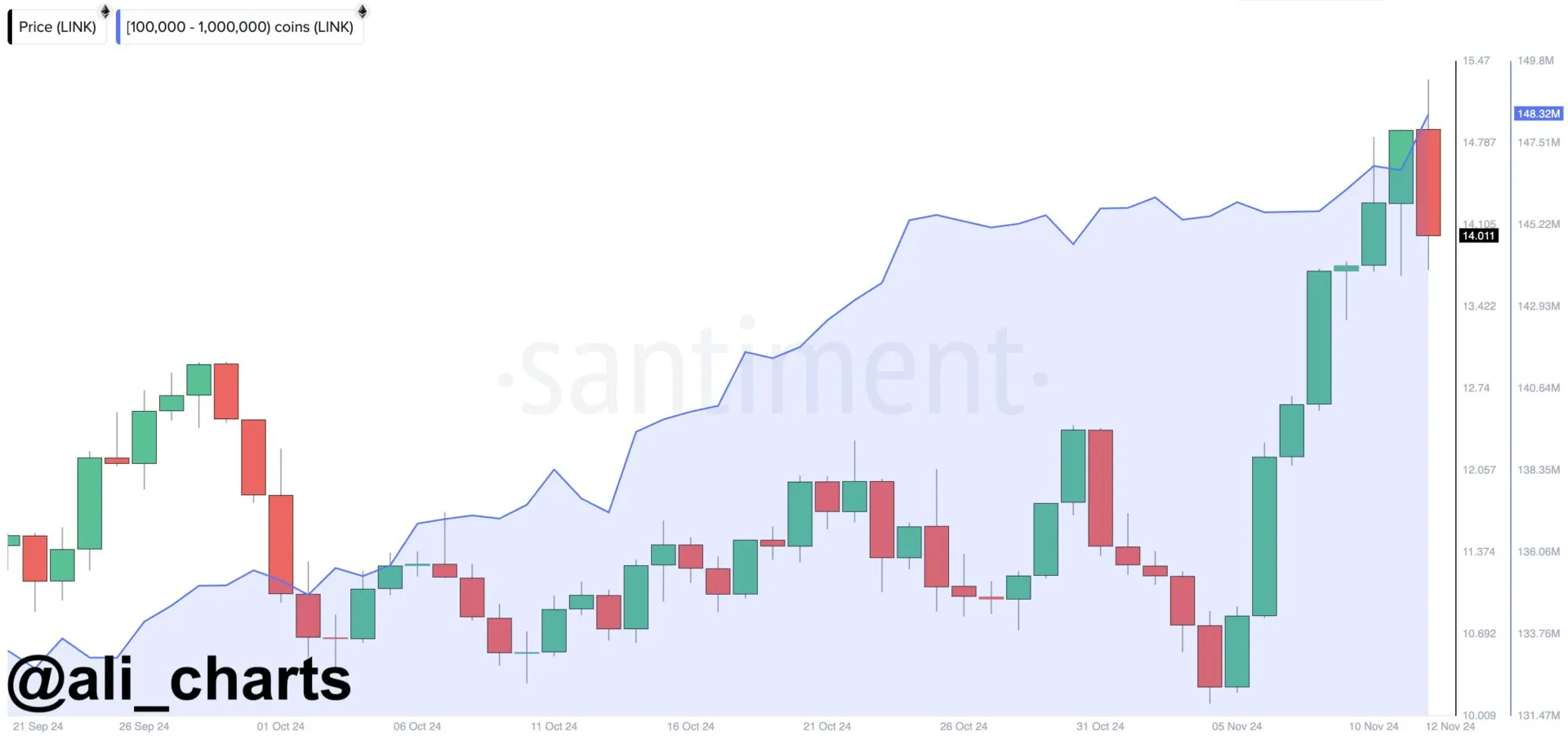The Central Bank of Brazil (BCB) has selected decentralized oracles provider, Chainlink, as one of the partners for its digital currency pilot, DREX. According to the announcement, the apex bank also selected Banco Inter, Microsoft Brazil, and 7COMm.
The companies will reportedly work on the second phase of the DREX pilot, which focuses on leveraging blockchain technology to automate trade finance processes and supply chain management. With this pilot, The BCB seeks to show the possibility of using blockchain technology for cross-border settlement of agricultural commodities transactions.
Under the partnership, Chainlink’s Cross Chain Interoperability Protocol (CCIP) will serve as the bridge connecting Brazil’s DREX with the central banks of other countries. The technology will provide all the accurate supply chain data needed to settle transactions on-chain.
The announcement said:
“The pilot will involve tokenizing an Electronic Bill of Lading (eBoL) on-chain and using supply chain data to trigger payments to exporters throughout the shipping process. The solution will demonstrate how blockchain-based trade finance unlocks Delivery versus Payment (DvP) and Payment versus Payment.”
Meanwhile, other partners also have crucial roles in the pilot program. Banco Inter will be responsible for the sole implementation of the DREX system in Brazil, while 7COMm will focus on technical implementation. Microsoft will provide the project’s cloud infrastructure.
Chainlink adoption continues to expand with partnerships
The partnership with BCB is only the latest in the long string of alliances that Chainlink has secured this year. The oracles provider has gradually become one of the most adopted blockchain projects, particularly by traditional financial institutions, due to its utility as an accurate data provider and an interoperability bridge for several blockchains.
A few days ago, Donald Trump-backed DeFi project World Liberty Financial (WLFI) adopted the Chainlink standard for its platform, noting its security and reputation. The network also recently completed a pilot program showing the use of smart contracts for managing tokenized funds. The program was in partnership with SBI Digital Markets and UBS Asset Management.
All these partnerships are part of Chainlink’s goal to be at the center of all cross-chain connections, linking multiple on-chain assets and networks. Chainlink founder Sergey Nazarov explained it best, noting:
“What if all Stablecoins, RWAs, and CBDCs start being connected and to all the world’s digital assets, across all chains, on one platform/standard set of protocols, because it has all the data connections, identity connections, and cross-chain connections they need to transact successfully?”
With this, Chainlink hopes to further show the utility of its CCIP infrastructure for central banks’ digital currencies (CBDC) and tokenized assets. As the company noted, the tool allows institutions to access more blockchain ecosystems without any need for complex integration between blockchain networks and existing technology.
LINK struggles despite adoption
Meanwhile, this adoption has not been fully reflected in LINK’s performance. All these partnerships have not been reflected in LINK’s performance. The token has been down almost 4% year to date, although it has increased by more than 24% in 30 days.
This poor performance makes the token an outlier in the generally positive crypto market, raising concerns about its future. There are no clear signs of why this is happening, given that whales have also been accumulating the tokens, but many believe it is because the team has also been dumping tokens.

However, many believe the asset is positioned to increase in value sooner or later, with one user calling it the “true institutional coin” and expecting it to see some gains soon. LINK is currently trading at $14.94.
 cryptopolitan.com
cryptopolitan.com